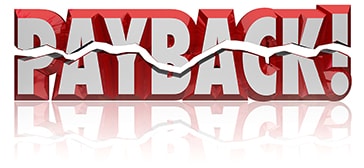Payment Protection Insurance
Introduction
 Falling behind on mortgage, loan, or credit card payments can have serious repercussions such as penalty charges, damage to one’s credit score, and even loss of property. Payment Protection Insurance (PPI) is designed to help avoid these repercussions by paying the insured’s mortgage, loan, and credit card repayments if the insured is unable to pay due to unemployment or illness. However, it is essential to note that the terms and conditions of this class of insurance are often complex, strict, and riddled with exclusions.
Falling behind on mortgage, loan, or credit card payments can have serious repercussions such as penalty charges, damage to one’s credit score, and even loss of property. Payment Protection Insurance (PPI) is designed to help avoid these repercussions by paying the insured’s mortgage, loan, and credit card repayments if the insured is unable to pay due to unemployment or illness. However, it is essential to note that the terms and conditions of this class of insurance are often complex, strict, and riddled with exclusions.
Banks and insurers have also been criticized for mis-selling policies to individuals who weren’t aware of the optional coverage or that they would never be able to file a claim. Over the recent years, a number of lenders have been levied penalties for poor PPI sales practices, including the payment of compensation to all mis-sold policies. This article will primarily focus on loan PPI policies.
Meaning
Payment Protection Insurance (PPI), also known as credit insurance, credit protection insurance, or loan repayment insurance can be defined as an insurance that will provide a sum of money to assist the insured in repayments on mortgages, credit/store cards, loans, or catalogues payments, in the event the insured is unable to work, as a result of accident, illness, unemployment or death. In simple terms, depending upon the type of protections selected, PPI pays or contributes to loan repayments in the event of involuntarily unemployed. In the event of death, life cover will repay an individual’s loan balance.
Payment Protection Policies are usually sold as part of the deal when consumers obtain a loan, mortgage, or credit card. However, it is also possible to receive a ‘stand-alone’ PPI policy. PPI policies that covers mortgage payments are termed as Mortgage Payment Protection Insurance (MPPI), which is taken out solely for ensuring the timely repayment of the mortgages. MPPI helps ease the minds of homeowners who fears missing mortgage payments due to unemployment, sickness or accident; which can ultimately lead to the repossession of their homes. Like other PPI policies, MPPI policies are of three types: unemployment only; accident and sickness only; unemployment, accident, and sickness. The exclusions applicable to MPPI are similar to that applicable to other PPI policies.
Need for PPI
PPI payouts could be a financial lifeline for those who are unable to keep up with their debt repayments. Whether an individual requires this sort of protection depends upon one’s financial circumstances and the amount of debt owed. For instance, if an individual has a sufficient amount of savings that could be utilized for repayments in the event of a drop-in income, he would not find it necessary to obtain PPI coverage.
 Having a PPI policy can assist in paying-off debt, provided the insured conducts thorough research into the available policies and selects a policy that is inexpensive while providing suitable coverage. With regard to credit score, a loan PPI policy can assist in maintaining the insured’s current credit score since the policy enables the insured to be up-to-date in loan payments. PPI is especially beneficial during periods of financial crisis since it will enable the insured to continue paying off loans.
Having a PPI policy can assist in paying-off debt, provided the insured conducts thorough research into the available policies and selects a policy that is inexpensive while providing suitable coverage. With regard to credit score, a loan PPI policy can assist in maintaining the insured’s current credit score since the policy enables the insured to be up-to-date in loan payments. PPI is especially beneficial during periods of financial crisis since it will enable the insured to continue paying off loans.
With regard to loan interest rates, obtaining a PPI policy doesn’t necessarily lower these rates. In many cases, when taking out a policy, the loan provider may try to make it seem like the loan interest will decrease if the insured also buys a payment protection insurance policy from the provider. However, in reality, the loan interest rate difference from the new ‘lower’ rate is latched onto the loan protection policy, which gives off the illusion that the loan interest rate has decreased; rather, the costs were merely transferred to the loan protection policy.
Products Sold with PPI
An individual may have had PPI, if he/she has taken out or used loan or credit product, such as:
- Credit card
- Loan – including personal loans, student loans, and business loans
- Store- usually from a high-street store
- Mortgage (including second charge mortgages)
- Loan secured on residences (in addition to mortgage)
- Car finance or anything bought on credit, including a sofa - could have been termed as ‘finance agreement’ or ‘hire purchase’
- Overdraft
- Home improvement loan
- Home shopping account
Types of PPI Coverages
There three primary levels of PPI coverages:
- Unemployment-only,
- Accident and Sickness-only (AS), and
- Accident, sickness, and unemployment (ASU).
Unemployment-only- covers the insured if they are made redundant.
Accident and sickness- protects the insured against accident and long-term illness (provided it is certified by a doctor).
Accident, sickness, and unemployment- provides an all-inclusive protection.
How are the PPI Payments Made?
 The cost of PPI policies depends upon where the insured lives, the type of policy selected, whether it is standard or age-related, and the amount of desired coverage. For loan PPIs, the premiums can be expensive, especially for individuals with poor credit history who may end up paying a substantial premium for coverage. For some loans, the entire cost of the PPI premium is added upfront to the borrowed amount. The borrower would then pay it off over the term of the loan, by paying interest on the premium; this is similar to the rest of the loan. However, this type of coverage is highly unpopular and is not permitted in many countries. On other loans (including mortgages), borrowers mostly pay for PPI policies by a monthly premium.The PPI policies sold with credit cards are also paid for by a monthly premium, however, these are added to what is owed on the card at the end of every month. The cost of the premium is calculated at a certain percentage of the total balance that is owed for a particular month. Once the claim is paid out, the monthly benefit is most often somewhere between three to ten percent of the amount owed. To read this Guide further, please click here.
The cost of PPI policies depends upon where the insured lives, the type of policy selected, whether it is standard or age-related, and the amount of desired coverage. For loan PPIs, the premiums can be expensive, especially for individuals with poor credit history who may end up paying a substantial premium for coverage. For some loans, the entire cost of the PPI premium is added upfront to the borrowed amount. The borrower would then pay it off over the term of the loan, by paying interest on the premium; this is similar to the rest of the loan. However, this type of coverage is highly unpopular and is not permitted in many countries. On other loans (including mortgages), borrowers mostly pay for PPI policies by a monthly premium.The PPI policies sold with credit cards are also paid for by a monthly premium, however, these are added to what is owed on the card at the end of every month. The cost of the premium is calculated at a certain percentage of the total balance that is owed for a particular month. Once the claim is paid out, the monthly benefit is most often somewhere between three to ten percent of the amount owed. To read this Guide further, please click here.
 English
English
 عربي
عربي Русский
Русский 官话
官话 português
português
 Türk
Türk 








